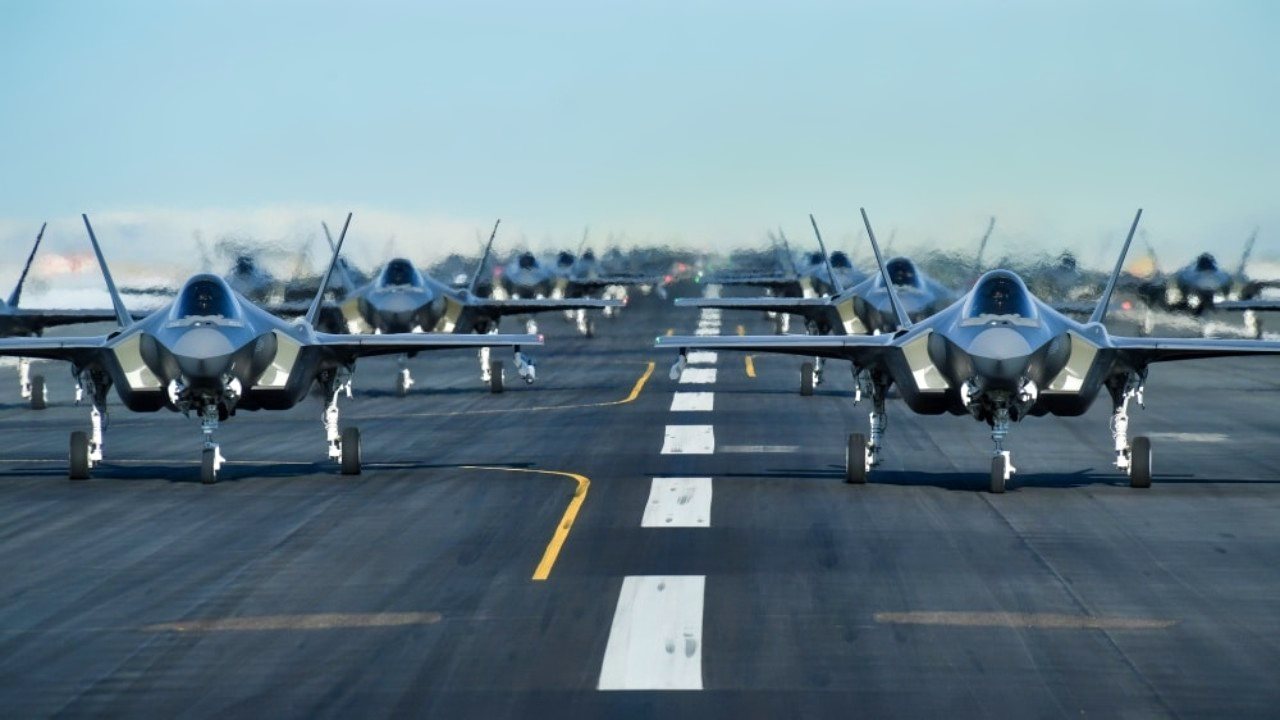More F-35 Stealth Fighters Are Headed To China's Doorstep
Singapore is set to enhance its aerial capabilities by adding eight F-35A fighters to its existing order of twelve F-35Bs, aiming to replace its F-16 fleet by 2030.
Summary: Singapore is set to enhance its aerial capabilities by adding eight F-35A fighters to its existing order of twelve F-35Bs, aiming to replace its F-16 fleet by 2030. This acquisition is part of Singapore's strategic move to maintain its status as a regional power, alongside increasing its defense budget to $15 billion for 2024. The F-35s, known for their stealth and multirole capabilities, are expected to elevate the Republic of Singapore Air Force to "premier league" status. Additionally, Singapore's defense initiatives include the procurement of Type 218SG submarines, reflecting a balanced approach to military modernization while cautioning against the risks of an arms race in the Indo-Pacific.
The Future of Singapore's Skies: F-35 Fighters to Replace Aging F-16s
There will be even more Lockheed Martin F-35 Lightning II fighters operating in the skies over the Indo-Pacific region in the coming decade, as Singapore announced that it intends to purchase eight of the conventional take-off and landing variants. The Southeast Asian nation already has a dozen F-35Bs, the short/vertical takeoff and landing (S/VTOL) variants, on order. Both models of the F-35 will replace the Republic of Singapore Air Force's (RSAF's) aging F-16 Fighting Falcons.
The fifth-generation stealth multirole aircraft are expected to be delivered by 2030, according to Singapore Defense Minister Ng Eng Hen, who was present at the island nation's Ministry of Defence's (MINDEF) budget debate in parliament on Wednesday.
"The F-35As are designed for greater endurance – they have the ability to carry payloads of higher capacity," Dr Ng told Parliament, adding that the two F-35 variants have different strengths that will bolster the RSAF's capabilities. He further suggested that once operational, the F-35 jets will put the RSAF in a "premier league."
Delivery of the first four F-35Bs is expected in 2026, with an additional eight to be delivered in 2028, and Dr. Ng further noted that the fifth-generation aircraft will replace the RSAF's aging F-16 jets, which have been in service since 1998.
Singapore – A Regional Power
Earlier this month, Singapore announced it would increase its defense budget for 2024 by 13% over the original budget for 2023 – reaching $15 billion. The nation is currently set to spend about 3% of its GDP on defense this year, up from 2.5% last year. However, Dr. Ng noted that the defense budget had fallen due to it being outpaced by stronger-than-expected economic growth. Moreover, while Singapore was spending about 5% of its GDP on defense around 20 years ago, the reduction has been due to efforts to build a strong military over the long term.
"So today, we are reaping dividends of the sums we put in steadily over the past 20 years. And if we continue to invest wisely, we will reap more dividends in the future," he said.
In addition to the F-35 acquisition, Singapore also ordered four Type 218SG submarines from Germany's Thyssenkrupp Marine Systems under contracts signed in 2013 and 2017. The first of these boats arrived in Singapore in July 2023 for sea trials.

It was also last year that Ng acknowledged that while defense spending is core to deterrence, he warned against unchecked military spending, which he said could threaten regional stability in the Indo-Pacific.
"In the absence of a strategic framework of engagement and mutual restraint, cooperation despite competition, that balance tilts away from deterrence and the risk of conflict increases," Ng stated during the annual Shangri-La Dialogue in Singapore. "In that context, the increased military spending veers towards an arms race with greater potential for destruction."

Author Experience and Expertise: Peter Suciu
Peter Suciu is a Michigan-based writer. He has contributed to more than four dozen magazines, newspapers, and websites with over 3,200 published pieces over a twenty-year career in journalism. He regularly writes about military hardware, firearms history, cybersecurity, politics, and international affairs. Peter is also a Contributing Writer for Forbes and Clearance Jobs. You can follow him on Twitter: @PeterSuciu. You can email the author: [email protected].


